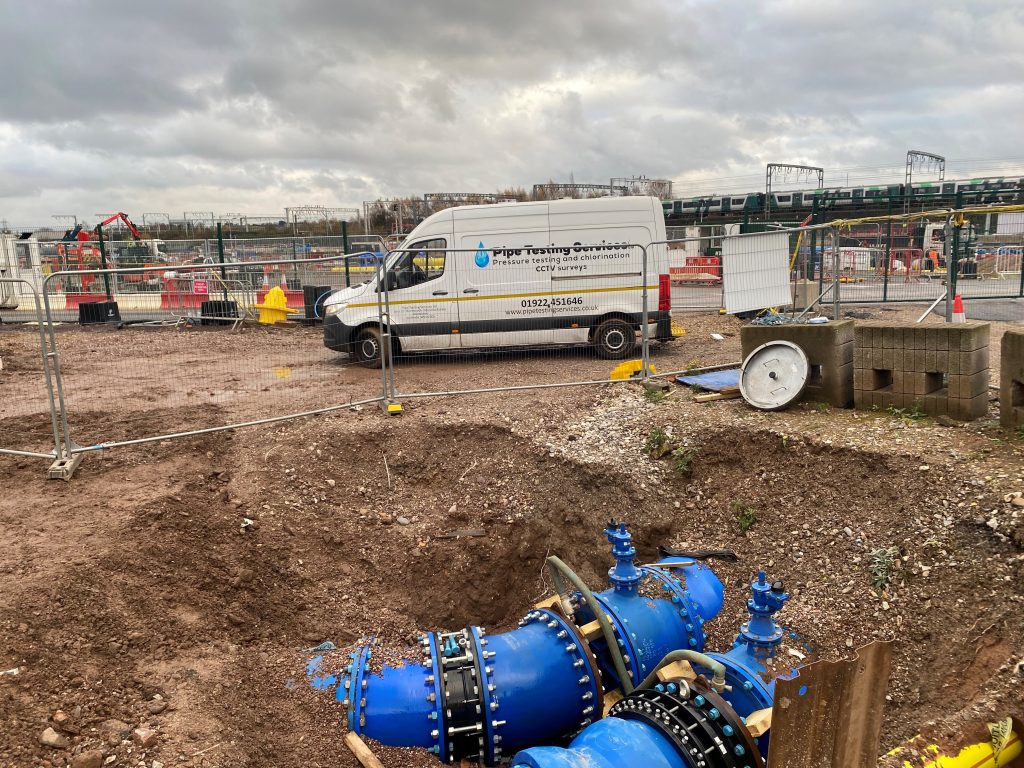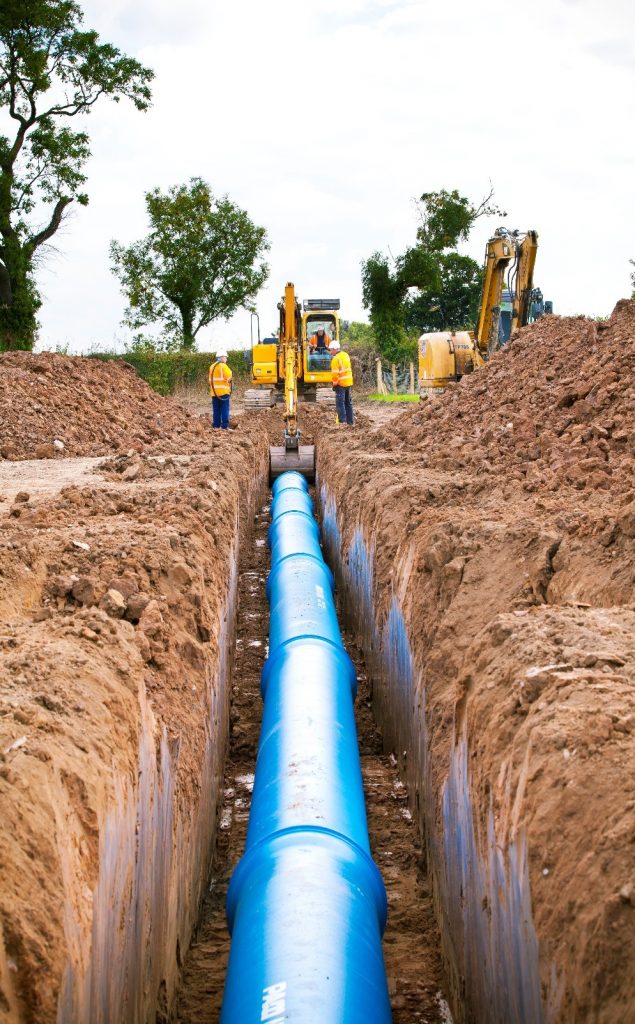Sectional vs Complete System Hydrostatic Testing
Hydrostatic testing plays a vital role in ensuring the integrity and safety of pipelines, vessels, and other pressurized systems.
This non-destructive testing method involves subjecting the system to a predetermined pressure, typically higher than the maximum operating pressure, using a liquid medium such as water.
Importantly, Hydrostatic pressure testing can be performed either on individual sections or the complete system. Each approach offering distinct advantages and considerations. At Pipe Testing Services (PTS), we carry out hydrostatic and rising mains pressure testing services regularly for clients nationwide. If you’re looking for a cost-effective testing solution for water infrastructure and pipelines, don’t hesitate to get in touch.
In need of services – take a look here. Alternatively, take a look at our dedicated site for Hydrostatic pressure testing
Sectional Hydrostatic Testing
Simply put, sectional hydrostatic testing involves dividing the entire system into smaller sections or segments and testing each section individually.
At PTS, we choose this approach for large or complex systems. Naturally, testing the entire system at once can be impractical or challenging. It all depends on the water system and pipework we are working with.
Here are several benefits and factors that we considered when opting for sectional testing. Let’s take a look:

Advantages of Sectional Testing
- Easier identification and isolation of leaks or defects: By testing smaller sections, it becomes simpler to pinpoint the exact location of any leaks or defects within a specific section.
- Reduced water or test medium requirements: Sectional testing minimises the amount of water or test medium needed for the test, potentially reducing costs and environmental impact.
- Minimised impact of potential failures: In the event of a failure during testing, the impact is contained within the isolated section, mitigating potential risks and damage.
- Accessibility: Sectional testing enables the evaluation of sections that may be inaccessible to test as part of the complete system.
Considerations for Sectional Testing
However, carrying out sectional hydrostatic testing is no without its challenges:
- Additional time and effort: Setting up and testing each section individually can be more time-consuming and labour-intensive compared to testing the complete system.
- Temporary isolation requirements: Sectional testing necessitates the use of temporary blanking or isolation measures to separate sections, adding complexity to the process.
- Potential stress condition discrepancies: Testing individual sections may not fully replicate the stress conditions experienced by the complete system during operation.
Complete System Hydrostatic Testing
Now let’s turn to the alternative, a complete system hydrostatic pressure testing:
As you may guess, complete system hydrostatic testing involves testing the entire pipeline, vessel, or system as a single unit. Crucially, without dividing it into sections. Muchlike its counterpart, this approach also offers advantages. At PTS, We carefully evaluate our methods based on the specific project requirements.
Advantages of Complete System Testing
- Comprehensive system integrity assessment: Testing the complete system provides a comprehensive evaluation of its integrity under actual operating conditions, ensuring all components and connections are tested together as an integrated unit.
- Elimination of sectional isolation: Complete system testing eliminates the need for temporary blanking or isolation of sections, simplifying the testing process.
- Time and effort efficiency: Compared to sectional testing, testing the complete system can be more efficient in terms of overall testing time.

Considerations for Complete System Testing
Increased Water or Test Medium Requirements
Testing the entire system necessitates a larger volume of water or test medium to fill the system, potentially increasing costs and logistical challenges.
Higher Potential Impact of Failures
A failure during the test could have more significant consequences when testing the complete system, as the entire system is subjected to the test pressure.
Complexity for Large or Intricate Systems
For very large or complex systems, testing the entire system as a single unit may be challenging or impractical due to limitations in access, setup, or testing equipment capabilities.
Determining the Appropriate Approach
including the size and complexity of the system, accessibility considerations, risk assessment, and project-specific requirements.
In some cases, a combination of both approaches may be employed. With critical sections tested individually and the complete system tested as a final step.
Several key elements should be considered when determining the appropriate testing approach:
System size and complexity
Larger or more intricate systems may benefit from sectional testing due to logistical challenges or limitations in testing equipment capabilities.
Accessibility constraints
If certain sections of the system are difficult to access or isolate, sectional testing may be necessary to evaluate those areas effectively.
Risk assessment
A thorough risk assessment should be conducted to evaluate the potential consequences of a failure during testing and determine the appropriate testing approach based on the identified risks.
Industry standards and regulations
Applicable industry standards and regulations may provide guidance or requirements for hydrostatic testing methods, which should be carefully reviewed and followed.
Project timeline and budget
The time and resource constraints of the project may influence the chosen testing approach, as sectional testing can be more time-consuming but may require fewer resources compared to testing the complete system.
By carefully evaluating these factors and weighing the advantages and considerations of each approach. Our team can make an informed decision on whether to perform sectional or complete system hydrostatic testing.
Regardless of the size and scale of the job, we’ll ensure the most effective, and cost-effective, method for efficient testing. Take a look at our recent blog page – Hydrostatic Testing of Underground Pipelines – if you’re interested in learning more about the critical process of hydrostatic pressure testing for detecting leaks and ensuring pipeline integrity.
Get in Contact with PTS for Expert Hydrostatic Pressure Testing Services
At Pipe Testing Services (PTS), we are committed to providing comprehensive hydrostatic testing services that adhere to the highest industry standards and regulations. Our experienced team and state-of-the-art equipment ensure the integrity of your underground pipelines. Crucially, mitigating potential risks to the environment, public safety, and your assets.
Phone – 01922 451646
Email – enquiries@pipetestingservices.co.uk
Address – Unit 27 Birchbrook Industrial Estate, Shenstone, Lichfield, Staffs, WS14 0DJ
If you have any further questions or need assistance with hydrostatic testing services, sectional or complete system testing, please don’t hesitate to contact our experts at PTS.
